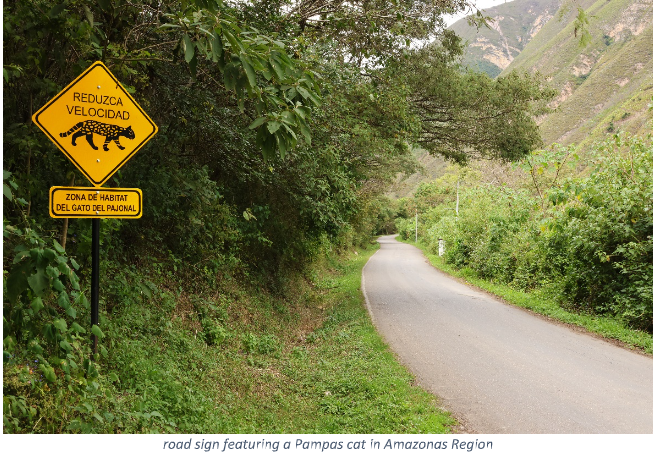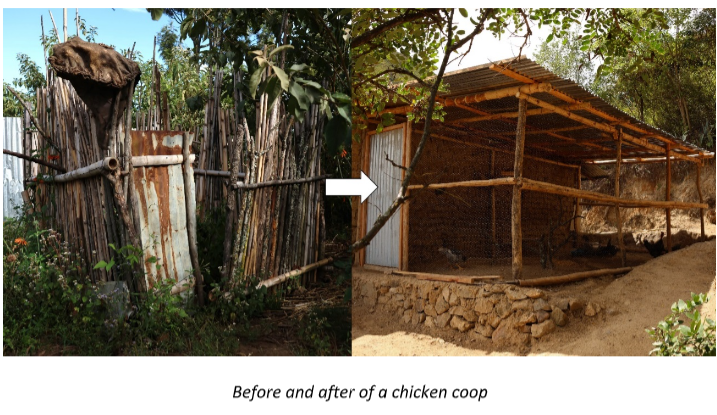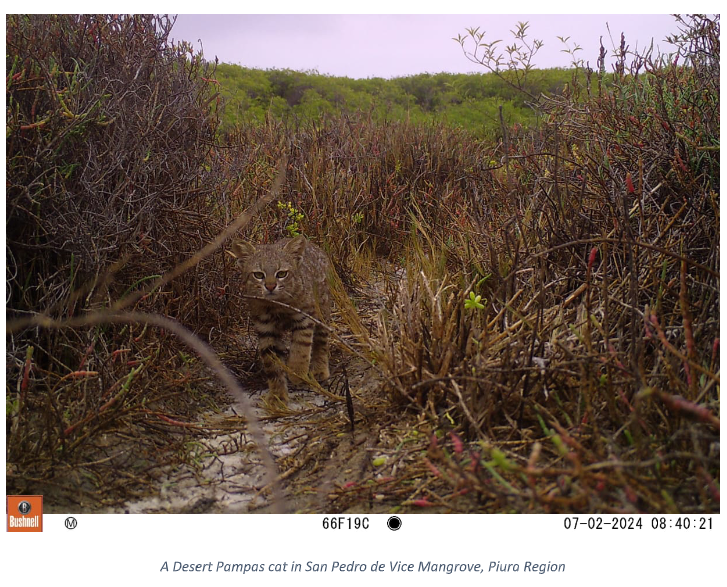A detailed study on the taxonomy, genetics, and niche ecology of the Pampas cat complex concluded that there are actually five species in South America, rather than one (Nascimento et al., 2020): the Desert Pampas cat (Leopardus garleppi), the Pampa cat (L. munoai), the Savanna Pampas cat (L. braccatus), the Colocolo (L. colocola) and the Pajeros (L. pajeros). Populations in Peru have been identified as Desert Pampas cats.
This small wild cat can be found from southern Colombia, Ecuador, and Peru, to Bolivia, northeastern Chile, and northwestern Argentina. It inhabits a wide variety of habitats, ranging from sea level up to approximately 5000 meters above sea level, including deserts, dry forests, inter-Andean valleys, and the Andes. Despite its wide distribution, it is considered a threatened species by the IUCN, and due to insufficient information in Peru, it is categorized as Data Deficient.
The overall threats faced by this species include habitat loss and fragmentation, along with other significant issues such as conflicts with people, disease transmission from domestic animals (dogs and cats), road mortality, and the pet trade. To mitigate these threats and monitor Desert Pampas cat populations, we have implemented five programs:
1. Roadkill Prevention Program
Through a citizen science program, we have documented 11 Desert Pampas cat roadkill incidents in four regions of Peru and more than 545 records of other species. To mitigate this threat, in collaboration with other organizations as Milpuj, we have installed 18 road signs at hotspots for roadkill incidents featuring the Desert Pampas cat. Additionally, we have distributed stickers to raise awareness about wildlife roadkill and conducted workshops with local transportation companies.
2. Wildlife Health Program
Domestic, free-ranging, and feral dogs and cats impact wildlife populations through disease transmission to wild carnivores, such as Feline Immunodeficiency Virus (FIV), Feline Leukemia Virus (FeLV), Canine Distemper Virus (CDV), and sarcoptic mange. To address this threat, we conduct vaccination and neutering campaigns in rural communities near Desert Pampas cat habitats, while also educating residents about wildlife conservation. Between July 2022 and August 2024, we have vaccinated more than 315 dogs and cats and neutered 58 dogs in three localities.
3. Conflict Mitigation Program
Human-wildlife conflict poses a significant threat to many wild cat species, including the Desert Pampas cat. For example, in the Cajamarca region, 90% of surveyed villagers reported having killed at least one Pampas cat in response to poultry predation. To address this issue, we are improving and building chicken coops to facilitate peaceful coexistence between wild cats, chickens, and people in the same environment. Until August 2024, we have helped 76 families but still there are more people needing our help to avoid loosing poultry because of carnivores predations.
4. Environmental Education Program
Community engagement and education are crucial components of every conservation initiative, particularly in raising awareness among local people and schoolchildren about the surrounding wildlife diversity and its conservation importance. Our project includes environmental education workshops in every town where we operate. Additionally, we are developing a teacher's manual to incorporate conservation practices, activities, and examples into school curricula. With support from Comuna Ciencia (an NGO focused on environmental education), teachers will use this manual to integrate conservation education into their teaching.
5. Camera Trapping Program
To monitor Desert Pampas cat populations and the effect of our interventions, we continuously deploy camera traps in protected areas and forest patches near the rural towns where we work. Local people are actively involved, showing great enthusiasm when viewing photos of various species captured in their surroundings.
These activities are essential for ensuring the survival of Desert Pampas cats and other
co-occurring carnivores, while also supporting the livelihoods of local communities
through our conservation efforts.
You Can Help
100% of donations will go directly to the Peruvian Desert Cat Project
Click the button to go to our fully secure Canada Helps donation site, then choose Peruvian Desert Cat Project from the dropdown menu list of funds





